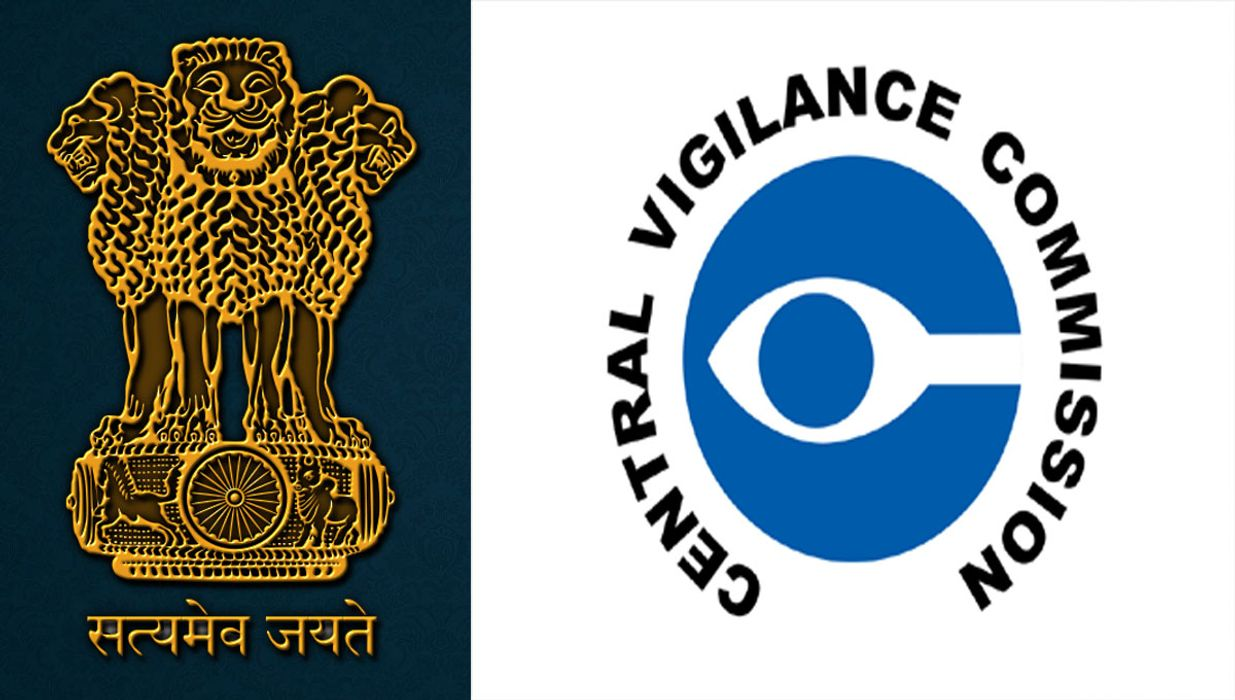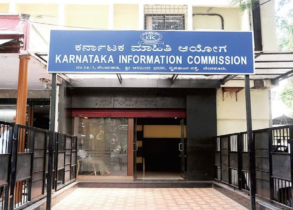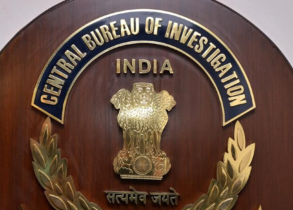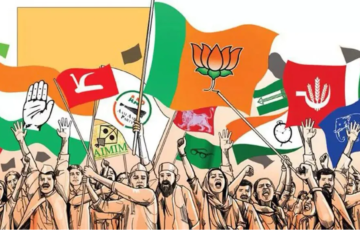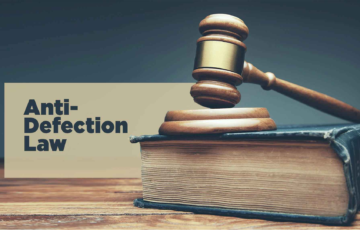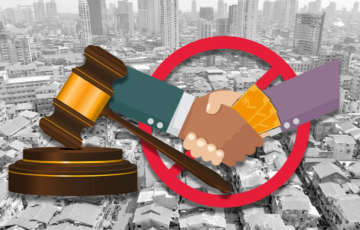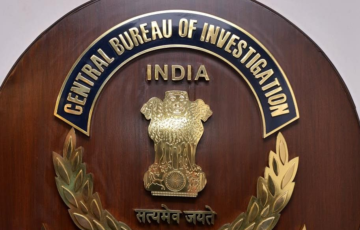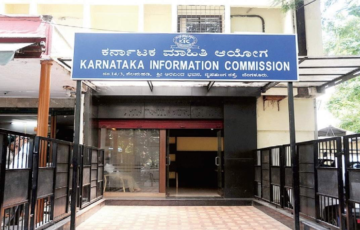CENTRAL VIGILANCE COMMISSION
Introduction
- The Central Vigilance Commission (CVC) is India’s top independent vigilance body, overseeing all government anti-corruption efforts and providing guidance to agencies on how to improve their vigilance work.
- The Government founded the CVC in February 1964, following the recommendations of the Committee on Prevention of Corruption, led by Shri K. Santhanam. In 2003, Parliament enacted the CVC Act, granting the CVC legal status.
- The CVC is an autonomous body that is only accountable to the Parliament. It is not under the control of any ministry or department.
- It is empowered to inquire into offenses alleged to have been committed under the Prevention of Corruption Act, 1988 by certain categories of public servants.
- The CVC was given legal status by the enactment of the Central Vigilance Commission Act, 2003. After the enactment of the CVC Act, 2003, the CVC became a multi-member body with a Central Vigilance Commissioner (Chairperson) and up to two Vigilance Commissioners (Members), all appointed by the President.
- The Central Vigilance Commission (CVC) is a multi-member commission consisting of a Central Vigilance Commissioner (CVC) and not more than two Vigilance Commissioners (VCs).
- The CVC and VCs are appointed by the President on the recommendations of a Committee consisting of the Prime Minister (Chairperson), the Minister of Home Affairs (Member) and the Leader of the Opposition in the Lok Sabha (Member).
- The term of office of the CVC and VCs is four years from the date on which they enter their office or till they attain the age of 65 years, whichever is earlier.
- The CVC has its own Secretariat, Chief Technical Examiners’ Wing (CTE) and a wing of Commissioners for Departmental Inquiries (CDI). For investigation work, CVC has to depend on two external sources CBI and Chief Vigilance Officers (CVO).
Structure of governance of the CVC is as follows:
- Multi-member commission: The CVC is a multi-member commission consisting of a CVC and not more than two VCs.
- Appointment: The CVC and VCs are appointed by the President on the recommendations of a Committee consisting of the Prime Minister, the Minister of Home Affairs and the Leader of the Opposition in the Lok Sabha.
- Term of office: The term of office of the CVC and VCs is four years from the date on which they enter their office or till they attain the age of 65 years, whichever is earlier.
- Wings: The CVC has its own Secretariat, CTE and CDI.
- Investigation: For investigation work, CVC has to depend on two external sources CBI and CVO.
Removal
- Removal Grounds: The Chairperson or any other members of the Central Vigilance Commission can be removed from their office by the President of India. This removal can only take place on the grounds of proved misbehavior or incapacity.
- Inquiry by Supreme Court: Before removal, an inquiry is conducted by the Supreme Court. The President can order the removal only after the Supreme Court, following an inquiry, reports that the Chairperson or members ought to be removed on the grounds of misbehavior or incapacity.
- Suspension During Inquiry: During the inquiry process, the President has the authority to suspend the Chairperson or any member from their office. Additionally, if deemed necessary, the President can prohibit them from attending their office during the inquiry.
- Specific Removal Grounds: The specified grounds for removal include:
- Adjudgment as an insolvent
- Engagement in any paid employment outside the duties of the office
- Unfitness to continue in office due to mental or physical infirmity
- Declaration of unsound mind by a competent court
- Acquisition of financial or other interests likely to affect their functions as a Central Vigilance Commissioner or a Vigilance Commissioner
- Conviction and imprisonment for an offense involving moral turpitude, as determined by the President.
- These provisions are in place to ensure the integrity and impartiality of the Central Vigilance Commission and to hold its members accountable for any misconduct or incapacity.
Role and Function of CVC:
The Central Vigilance Commission (CVC) has a range of core functions and duties, including:
- The CVC does not have its own investigative wing. It either commissions investigations from the Central Bureau of Investigation (CBI) or from Chief Vigilance Officers (CVOs) in government offices.
- The Central Vigilance Commission (CVC) receives and investigates complaints of corruption or misuse of office, and recommends appropriate action. The following institutions, bodies, or individuals can approach the CVC:
- Central Government
- Lokpal
- Whistleblowers
- Providing guidance and advice to government departments on how to deter corruption and improve transparency in their operations.
- Promoting whistleblower protection by encouraging them to report instances of corruption or misconduct and safeguarding their interests.
- Reviewing vigilance cases referred to it by various government entities and organizations, and proposing measures, including disciplinary action, against errant officials.
- Overseeing the performance of different anti-corruption agencies and providing guidance to improve their efficiency and effectiveness.
- Raising public awareness about the harmful effects of corruption and the importance of upholding integrity in public service. Eg. Vigilance Awareness Week.
The CVC has reformed the transfer and posting guidelines for vigilance unit officials to:
|
Jurisdiction
- Members of All India Service serving in connection with the affairs of the Union: This likely refers to officers serving in the Indian Administrative Service (IAS), Indian Police Service (IPS), and other similar All India Services who are working for the central government.
- Group A officers of the Central Government: These are high-ranking officers in the Indian bureaucracy who belong to the Group A cadre. This includes officers from various services, such as the Indian Administrative Service, Indian Foreign Service, etc.
- Officers of the rank of Scale V and above in Public Sector Banks: This refers to senior officers in public sector banks, with Scale V being a higher rank.
- Officers in Grade D and above in Reserve Bank of India, NABARD, and SIDBI: This includes officers working in the Reserve Bank of India (India’s central bank), NABARD (National Bank for Agriculture and Rural Development), and SIDBI (Small Industries Development Bank of India) who are at Grade D and above.
- Chief Executives and Executives on the Board and other officers of E-8 and above in Schedule ‘A’ and ‘B’ Public Sector Undertakings: These are high-ranking officials in Schedule ‘A’ and ‘B’ Public Sector Undertakings (PSUs) who hold positions at E-8 level and above. PSUs are government-owned enterprises.
- Chief Executives and Executives on the Board and other officers of E-7 and above in Schedule ‘C’ and ‘D’ Public Sector Undertakings: Similar to the previous category, this pertains to officers in Schedule ‘C’ and ‘D’ PSUs but at a slightly lower rank (E-7 and above).
- Managers and above in General Insurance Companies: This category includes managers and higher-ranking officials in general insurance companies.
- Senior Divisional Managers and above in Life Insurance Corporations: Refers to senior officers in Life Insurance Corporation (LIC) at the Divisional Manager level and above.
- Officers drawing salary of Rs. 8700/- p.m. and above on Central Government D.A. pattern, as on the date of the notification and as may be revised from time to time in Societies and other Local Authorities: This category likely includes officers and employees in various societies and local authorities who meet the specified salary criteria following the Central Government’s salary pattern.
Limitations
- Advisory body: The CVC is only an advisory body. It cannot take any direct action against corrupt officials. It can only recommend action to the government or other agencies.
- Lack of investigative powers: The CVC does not have its own investigative wing. It has to rely on the CBI or other agencies to investigate corruption cases.
- Limited resources: The CVC has a limited budget and staff. This makes it difficult for it to effectively monitor and investigate corruption cases.
- Political interference: The CVC is appointed by the government and its funding is also dependent on the government. This makes it vulnerable to political interference.
- Weak coordination with other agencies: The CVC often has difficulty coordinating with other anti-corruption agencies, such as the CBI and the Enforcement Directorate. This can lead to delays and inefficiencies in investigations.
These limitations have been highlighted by various committees and commissions that have reviewed the functioning of the CVC. These committees have recommended a number of reforms to strengthen the CVC, including:
- Giving the CVC statutory status: This would make the CVC more independent from the government and give it more powers to investigate corruption cases.
- Giving the CVC its own investigative wing: This would allow the CVC to investigate corruption cases more effectively.
- Increased funding and resources: This would allow the CVC to expand its operations and hire more staff.
- Strengthening coordination with other agencies: The CVC should work with other anti-corruption agencies to develop a more coordinated approach to combating corruption.
The Central Vigilance Commission (CVC) has set up several committees over the years to make recommendations on various aspects of its work and functioning. Some of the key recommendations of these committees include:
- Strengthening the CVC’s investigative powers: The CVC should be given the power to investigate corruption cases directly, without having to rely on the CBI or other external agencies.
- Making the CVC more independent: The CVC should be given statutory status and its funding should be made independent of the government.
- Improving the CVC’s coordination with other agencies: The CVC should have better coordination with the CBI, other law enforcement agencies, and the judiciary.
- Making the CVC more transparent and accountable: The CVC should publish more information about its work and make itself more accountable to the public.
In addition to these general recommendations, the CVC’s committees have also made specific recommendations on a range of issues, such as:
- Whistleblower protection: The CVC should create a strong whistleblower protection mechanism to encourage people to come forward and report corruption.
- Prevention of corruption in public procurement: The CVC should work with the government to strengthen the public procurement system and make it more transparent and accountable.
- Corruption in the private sector: The CVC should expand its focus to include corruption in the private sector.
The CVC has accepted and implemented many of the recommendations of its committees. However, there are still some areas where the CVC needs to do more to improve its functioning and effectiveness.
Some specific recent committee recommendations for the CVC:
|
The Central Vigilance Commission in India is a key institution responsible for combating corruption, ensuring transparency, and promoting good governance in the country’s public sector. It plays a vital role in upholding the principles of integrity and accountability in government operations.

